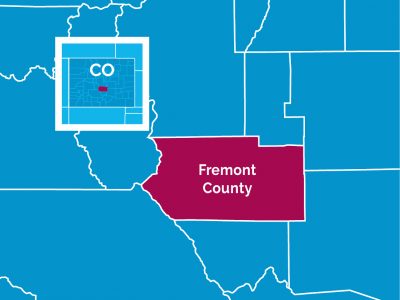The Charlotte-Mecklenburg Continuum of Care (CoC) includes individuals and organizations across Mecklenburg County, a municipality with a population of 1.14 million people. Since joining Built for Zero in 2015, the Charlotte-Mecklenburg CoC has prioritized the use of real-time data to improve their homeless response system and drive reductions in homelessness.
Charlotte-Mecklenburg has made significant progress in reducing veteran homelessness by working collaboratively across agencies, utilizing resources in innovative ways, and deliberately striving for racially equitable outcomes. The community has long-been dedicated to reducing chronic homelessness through national movements such as Community Solutions’ 100,000 Homes Campaign, which aimed to place 100,000 chronically or vulnerable homeless Americans into permanent housing, and local initiatives including Housing First Charlotte-Mecklenburg, a multi-sector collaboration in Charlotte-Mecklenburg to end chronic homelessness by taking Housing First to scale.
By prioritizing quality data in their work, Charlotte-Mecklenburg has been able to analyze by-name data to identify emergent trends, inform resource allocation, and provide insightful and actionable findings to a range of stakeholders, including elected officials, service providers, funders, people with lived experience of homelessness, policymakers, and the wider community. We spoke with Mary Ann Priester, Senior Management Analyst and Homeless Management Information System Administrator for the Charlotte-Mecklenburg CoC, to learn more about the CoC’s data system.
Homeless Management Information System
Charlotte-Mecklenburg recently transitioned to a new HMIS software vendor in July 2023 that offers enhanced reporting functionality, streamlined data entry, advanced analytics, and data integration capabilities. Despite feeling limited by their previous HMIS software’s reporting tool, Charlotte-Mecklenburg was proactive in addressing these limitations. The CoC’s HMIS team contracted with a Community Solutions consultant to develop custom reports, which proved to be effective in meeting their specific needs for several years. By transitioning to a new vendor, Charlotte-Mecklenburg has positioned itself to better leverage technology and data to drive their work to end homelessness.
Getting Providers Access to HMIS
The Charlotte-Mecklenburg CoC bills agencies for HMIS licenses, charging a reasonable annual fee of approximately $250 that gets approved by the CoC’s HMIS Sub-Committee. The low license cost enables any provider in the CoC with a business need to join the system and become a contributing organization. Since the CoC does not have a limited number of licenses to disperse, they are able to bring on as many partners as they desire.
While funding-related requirements drive organizations to join the system, many grassroots organizations also firmly believe in the importance of contributing to HMIS – especially if they wish to access community funding. Additionally, some organizations participate in HMIS with the intention of better accessing resources for the people they serve.
The CoC wants to ensure that all members are contributing to the system and that the system provides a benefit to those whose data is entered. They have had considerable success in provider participation in HMIS overall, with a current participation rate of 92%. However, smaller organizations that join the system often face challenges with data entry and capacity that prevent them from contributing data. To address this challenge, the CoC has supported capacity building for grassroots organizations, including helping with HMIS data entry and covering the cost of licenses.
Expanding Data-Related Roles and Responsibilities
In 2017, the CoC had two staff members with data-related responsibilities. One staff member was charged with ensuring quality data within HMIS, while the other staff member was responsible for communicating and disseminating data out to the community, fostering data literacy, and using data to make decisions about funding and services. Since then, the CoC’s HMIS and Research Team has expanded to four staff members. Mary Ann Priester, the Senior Management Analyst and Homeless Management Information System Administrator, serves as the project manager and is responsible for policy and data support within the community. One Management Analyst concentrates on training and technical assistance, and another Management Analyst focuses on federal reporting. A new Senior Management Analyst has been hired to assist with the migration to the new HMIS software.
Evolving Practices for Updating, Maintaining, and Using By-Name Data
By-Name Lists for Case Conferencing
Charlotte-Mecklenburg has made considerable changes in their process for using HMIS to update and maintain their by-name data. Several years ago, updating and maintaining by-name data was a time-intensive, fully manual, and error-prone process. HMIS played a limited role and was primarily used to verify data that staff members in the community submitted via email. This tedious process of reconciling across multiple data sources posed consistent challenges for reaching reliability.
In 2019, Community Solutions introduced the Built for Zero Inflow, Outflow, and Case Conferencing Reports, which Charlotte-Mecklenburg used to transition from the time-intensive, manual approach for updating their by-name list to exclusively extracting information from HMIS using the case conferencing report to generate a by-name list of everyone experiencing homelessness in the community.
Charlotte-Mecklenburg adopted a “casting the net wide” approach to pull data from HMIS for their by-name lists. This means they pull by-name data encompassing a range of program enrollments, including everyone who is enrolled in HMIS in Emergency Shelter, Transitional Housing, Street Outreach, Permanent Housing (if there is not yet a housing move-in date), and Coordinated Entry projects. The CoC’s HMIS team includes a range of projects to ensure that their by-name list captures everyone who has touched the homeless response system, including those who have not undergone a coordinated entry assessment. Locally, the number of people on this list is referred to as the “One Number” metric – a count of all individuals experiencing active homelessness on the last day of the month.
Their by-name list is then segmented into protected Excel spreadsheets for case conferencing meetings focused on specific populations: chronic, youth, families, and veterans. Case conferencing meeting notes are kept on the actual by-name list, and the case conferencing and scoring reports from HMIS are used to update these external lists.
Integrating VA data in the Veteran By-Name List
The local Veterans Affairs (VA) medical center based in Salisbury, North Carolina, utilizes an Excel spreadsheet, referred to as “the tracker,” which contains specific data elements pertaining to individuals experiencing homelessness, including their county of residence to ensure that the individuals are within the CoC’s jurisdiction, as well as their housing status and referral information. The VA Coordinated Entry Specialist sends an encrypted email sharing this data with the Charlotte-Mecklenburg CoC on a weekly basis, and the CoC cross-matches this information against HMIS. For veterans on the tracker who are not currently in HMIS, the CoC enters their information in their Veteran By-Name List Project in HMIS. These individuals also get included in the overall One Number metric. This process enables the CoC to maintain up-to-date information that facilitates their efforts to provide effective services to veterans experiencing homelessness.
Producing Monthly Metrics, Understanding System Trends, and Using Data for Improvement
The Charlotte-Mecklenburg CoC has made significant strides in reporting data on inflow, outflow, and the number of people experiencing homelessness in the community. The community tries to align their metrics with the Department of Housing and Urban Development’s (HUD) system performance measures, which get reviewed by Charlotte-Mecklenburg’s Data Advisory Committee on a regular basis. Since 2019, the CoC has shared their inflow and outflow data publicly on a data dashboard that gets updated monthly and shows historical changes in the One Number population in total, as well as disaggregated by age, gender, race, and ethnicity. They aim to go further in the future by analyzing intersectionality and disaggregating data to examine patterns among people with different housing statuses.
The CoC monitors their inflow data monthly to understand the characteristics of people coming into the system. By tracking trends over time on a quarterly basis, the community is able to use this information to identify emergent trends and inform resource allocation. When they notice an increase in a specific population, like parenting youth households, they investigate to identify gaps in service and opportunities for improvement. The CoC integrates data into every committee, including the Equity & Inclusion Committee, which reviews disaggregated data for inflow and outflow monthly to identify areas of focus.
The Charlotte-Mecklenburg CoC is actively working to determine the optimal frequency and method for presenting data to their board in a meaningful and actionable way. During a recent strategic planning retreat, the CoC Board utilized a stoplight method – an approach that involved categorizing progress on meeting each benchmark as green, yellow, or red – when presenting system performance measures to their board. A consultant then facilitated a targeted problem-solving session by dividing up the board into small groups that focused on specific metrics, such as length of time homeless, and brainstormed opportunities for improvement in specific areas. Rather than trying to address all six system performance measures at once, this strategy allowed for effective, focused problem-solving that kept people on track and prevented the CoC board from becoming overwhelmed with too much information.
Additionally, the CoC has implemented quarterly monitoring of CoC and Emergency Solutions Grant-funded organizations. Regular monitoring has been effective in prompting organizations to make real-time adjustments, rather than waiting until the end of the year. This approach has driven change at the organization level, with agencies sharing best practices amongst each other to help improve outcomes and the CoC revising their criteria for services to remove barriers to assistance, such as documentation requirements and income limits.
Future Plans and Areas for Improvement
As the Built for Zero Case Conferencing, Inflow, and Outflow Reports are integral to their work and coordinated entry system, Charlotte-Mecklenburg plans to rebuild these into their new HMIS software to ensure a seamless transition and continued use of the reports. They are eager to move into a more advanced space of data utilization, including integrating HMIS data with other community systems, such as the local school system.
When asked about important lessons learned from the HMIS team’s experience building the needed infrastructure for quality by-name data, Priester noted that it’s important to understand how local practices developed in response to capacity issues can have long-term impacts on community metrics. Currently, their Coordinated Entry System is set up to keep individual enrollees open in the Coordinated Entry project in HMIS until they exit to permanent or transitional housing or other known locations. With roughly 450 coordinated entry assessments completed each month and many people in HMIS who cannot be located for follow up, the community has not historically had sufficient capacity to manage exits in real time. This results in a drop in their “One Number” metric every three months, when these individuals that cannot be located are exited from the Coordinated Entry project.
To address this, the Mecklenburg County Government utilized American Rescue Plan Act funding to hire four new Coordinated Entry staff members, including a Coordinator focused on data quality who will work to ensure timely exits from the community’s Coordinated Entry project in HMIS within thirty days of no contact. They also aim to utilize the new HMIS software system’s auto-exit feature, which is expected to improve data reliability and the accuracy of their by-name list.
Looking forward, the Charlotte-Mecklenburg CoC is excited to grow and adapt to better serve people experiencing homelessness in their community, recognizing that data should drive their efforts. They are hopeful that they can pull out and integrate data in their new HMIS software in a way that enables them to further improve their system.




